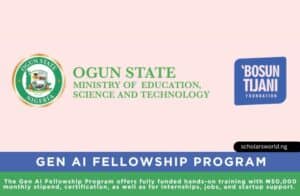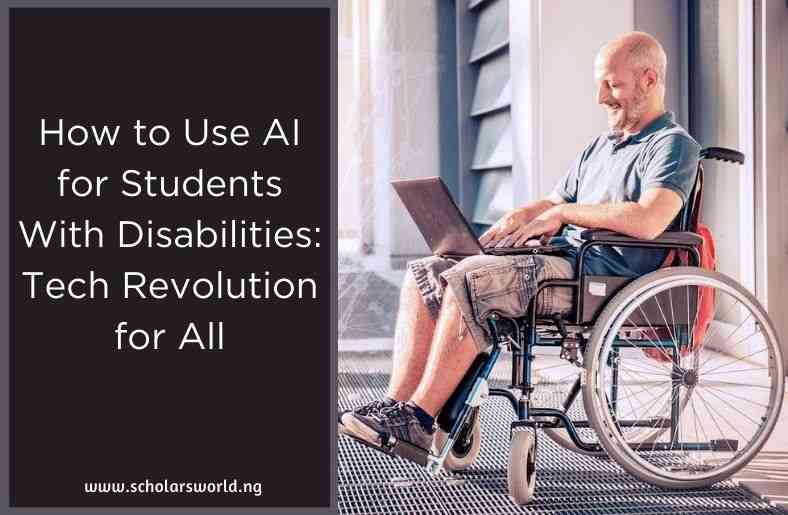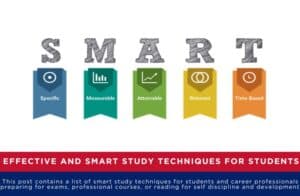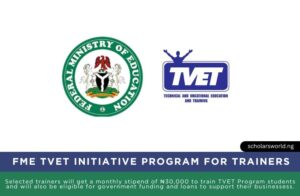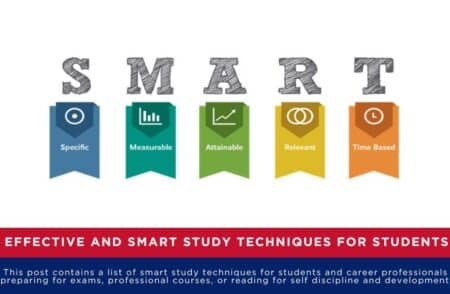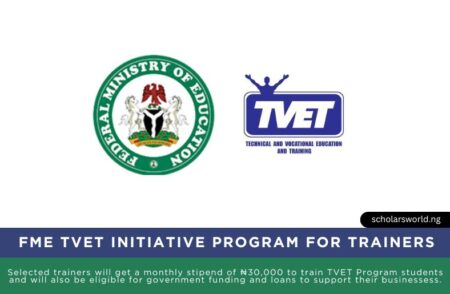Have you witnessed the revolution of AI for students with disabilities?
In the fast-evolving landscape of technology, Artificial Intelligence (AI) is emerging as a powerful ally in addressing the unique challenges faced by students with disabilities.
This article explores the profound ways AI is revolutionizing education for individuals with physical, mental, visual, or hearing impairments.
As we seek to discuss the five impactful aspects, the goal is to unveil the potential of AI to create a more inclusive and accessible learning environment for all.
We are live on Twitter! Join our fast-growing community of scholars on X!@ngscholarsworld
— Scholars World (@ngscholarsworld) November 11, 2023
Kindly follow us, like, and share our posts to help reach a larger audience. #Scholarship #UK #EducationUSA
Discover the transformative impact of AI on students with disabilities, exploring five key ways technology enhances communication, learning, independence, connection, and inclusion.
We will also a a new era of accessibility and inclusivity in education as we unravel the different ways to use AI for students living with disabilities.
How To Use AI for Students with Disabilities
1. Easing Communication: AI Voice Technology
For individuals with disabilities, AI voice technologies like Siri, Alexa, and Echo are invaluable tools. These programs facilitate communication by converting text and visuals, enabling those with visual or speech impairments to interact more effectively.
Google’s Parrotron, an AI technology, transforms stuttering speech into coherent communication, fostering an inclusive environment in schools and collaborative settings.
2. Learning Opportunities: Inclusive Education with AI
AI ensures inclusive learning by providing tools like braille tutor apps, enabling visually impaired individuals to learn braille digitally.
These applications leverage optical character recognition (OCR) to convert physical braille characters into digital text, opening up new educational horizons.
Additionally, AI-powered tools assist educators in tailoring learning pathways, offering personalized training programs and continuous performance-based feedback.
3. Virtual Assistants and Chatbots:
Virtual assistants like Google Assistant and Amazon Alexa empower students with disabilities to lead autonomous lives.
These AI applications assist in planning meetings, sending reminders, and automating various tasks. Incorporating AI-powered chatbots into work-related applications enhances efficiency, exemplified by Skype’s interaction with Microsoft Bing.
These technologies streamline workflows, allowing all students to expedite manual processes.
Explore more scholarship opportunities below.
4. Connection To The Outside World: Enhancing Social Interaction
AI technology fosters a sense of connection for individuals with disabilities. Voice-controlled assistants like Microsoft’s Cortana aid visually impaired individuals in device usage, while AI-powered programs such as RogerVoice and Ava facilitate group chats for those with hearing impairments.
These tools enable students to attend meetings, respond to emails, and collaborate seamlessly with their peers.
5. Inclusion Regardless Of Ability: AI for Workplace Inclusion
AI contributes to workplace inclusion and accessibility, ensuring individuals with disabilities have equal opportunities. Schools can utilize AI tools to attract diverse students and provide avenues for success.
By leveraging these technologies, institutions create environments where everyone, regardless of ability, can work independently, collaborate in teams, and acquire new skills.
Conclusion
As the educational landscape embraces AI, the potential for creating an inclusive and accessible environment for students with disabilities becomes limitless.
The five ways discussed highlight the transformative power of AI in communication, learning, independence, connection, and workplace inclusion.
By incorporating these technologies, schools can usher in a new era of education that truly caters to the needs of all students.




